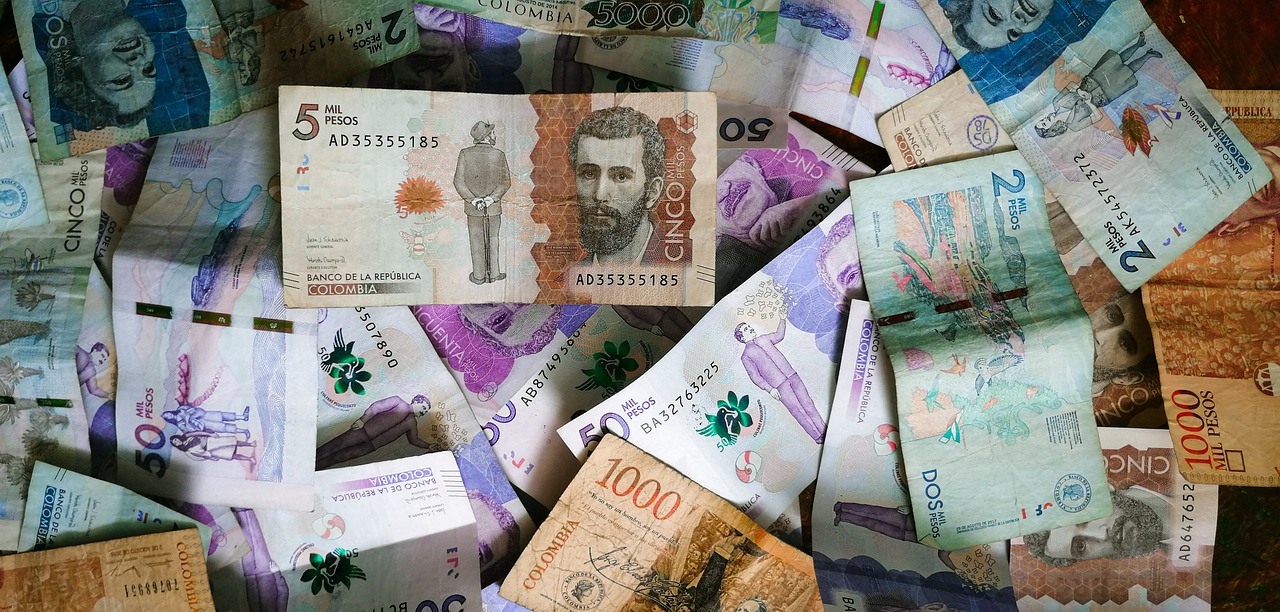Peso-Dollar Exchange: Inflation Impact, Tracking Methods, and Market Fluctuations
GPT_Global - 2025-10-27 09:00:37.0 305
What is the easiest way to track 1 peso to USD on my phone?
In today's global economy, many people need to track currency conversions frequently, especially for businesses and individuals involved in remittances. If you're wondering how to easily track the value of 1 peso in USD, there are various tools and apps available for your phone that make it simple and quick.
One of the easiest ways is by using currency converter apps like XE, Revolut, or Google Finance. These apps provide real-time exchange rates and allow users to track changes throughout the day. XE, for instance, is widely recognized for its accuracy and ease of use. You simply need to enter the amount of pesos you want to convert, and it will display the equivalent in USD.
Another great method is through banking apps that offer currency exchange features. Many remittance services also provide their own tracking tools, offering updated rates directly within their apps. By using these apps, you can ensure that you are getting the best rate when sending or receiving money, particularly important for businesses involved in cross-border transactions.
Tracking 1 peso to USD has never been easier, and with the help of these mobile tools, you can stay on top of your finances anytime, anywhere. This is especially crucial for remittance businesses looking to optimize their operations in today’s fast-paced market.
How often does the peso-dollar exchange rate update?
The peso-dollar exchange rate is updated regularly, with fluctuations occurring multiple times throughout the day. This is because exchange rates are influenced by various factors, such as economic indicators, market demand, and geopolitical events. In the case of remittances, it’s essential to keep track of these changes, as they can affect the amount of money being sent or received.
For remittance businesses, staying informed about the peso-dollar exchange rate is critical for providing customers with accurate and timely services. Many remittance companies monitor the rate closely and offer competitive exchange rates to attract clients. These businesses typically update their exchange rates in real-time or on a daily basis, depending on market conditions.
When sending money internationally, the exchange rate can make a significant difference in the total amount received by the recipient. A small fluctuation in the rate may result in a higher or lower payout, making it crucial for remittance businesses to offer transparency and clear communication about rate updates.
In conclusion, the peso-dollar exchange rate is constantly changing, and businesses in the remittance sector must stay on top of these updates to remain competitive and provide the best possible service to their customers.
What happens if the peso depreciates significantly against the dollar?
When the peso depreciates significantly against the dollar, it impacts both local consumers and businesses, especially in the remittance industry. Remittance businesses, which facilitate the transfer of money from overseas workers to their families back home, are particularly affected by exchange rate fluctuations. A weaker peso means that recipients in the home country will receive less value for the same amount of money sent in dollars.
This currency depreciation can lead to increased costs for families relying on remittances, as they now need more pesos to meet their daily expenses. On the other hand, remittance businesses can benefit from a surge in demand for dollar transfers, as senders look to take advantage of favorable exchange rates. However, the challenge remains in balancing the exchange rates to ensure profitability while supporting customers.
For remittance businesses, adapting to the market's dynamics during times of peso depreciation involves offering competitive rates, quick transfer services, and transparent fee structures. It also becomes crucial for these businesses to educate their clients about how exchange rate movements can influence the value of their remittance transactions, ensuring that both senders and receivers can make informed financial decisions.
How does global oil price affect the peso-to-dollar exchange rate?
Global oil prices play a major role in shaping the peso-to-dollar exchange rate, especially for countries like the Philippines that rely heavily on oil imports. When oil prices rise, the cost of imports increases, leading to higher demand for U.S. dollars to pay for these imports. This often results in the depreciation of the Philippine peso against the dollar.
Conversely, when global oil prices drop, the Philippines spends less on oil imports, easing the demand for dollars. This can help strengthen the peso and make foreign exchange rates more favorable. However, fluctuations in oil prices can still create volatility, influencing how remittances are converted into local currency.
For remittance businesses, these changes matter significantly. When the peso weakens, overseas Filipino workers (OFWs) sending money home can provide their families with more pesos for every dollar sent. Understanding the connection between oil prices and exchange rates helps remittance companies and OFWs optimize their transfers, ensuring the best possible value for their hard-earned money.
Are there apps that notify me of changes in the peso-to-dollar rate?
In the fast-paced world of remittances, staying updated on currency exchange rates is crucial for both senders and receivers. One of the most commonly tracked rates is the peso-to-dollar rate. Fortunately, several apps are available that notify users of changes in these exchange rates, making it easier to manage international money transfers.
Apps like XE Currency, Revolut, and OANDA offer real-time notifications and allow users to set alerts based on specific rate thresholds. This is especially helpful for people who regularly send money abroad, as they can time their transfers to get the most favorable exchange rates.
These apps not only track the peso-to-dollar rate but also provide historical data and forecasting tools. This ensures that users can make informed decisions and save money on remittance fees. By using such apps, customers can maximize the value of their transfers and avoid unnecessary costs.
In summary, apps that notify users of changes in the peso-to-dollar rate are invaluable tools for anyone involved in remittance services. By staying updated with real-time notifications, senders can ensure their money goes further and benefit from the most favorable exchange rates available.
How does the black market rate for pesos to dollars differ from the official one?
The exchange rate between the peso and the dollar can vary significantly depending on whether you're using the official rate or the black market rate. The official rate is set by the government and is typically available through formal financial institutions. On the other hand, the black market rate, which is unofficial, arises from private transactions and is influenced by supply and demand dynamics outside of government control.
In many countries, the black market rate for pesos to dollars can be much higher than the official rate. This disparity often occurs because of economic factors like inflation, government restrictions, or a lack of foreign currency in the official market. As a result, people may turn to the black market for more favorable exchange rates, especially for remittances, where the difference can significantly affect the value sent to family members back home.
For businesses involved in remittances, understanding both rates is crucial. Offering competitive rates can make a significant impact on customer satisfaction, particularly for those looking to maximize the value of their transfers. This highlights the importance of staying informed about market trends and regulatory changes to serve clients effectively in a fluctuating currency landscape.
About Panda Remit
Panda Remit is committed to providing global users with more convenient, safe, reliable, and affordable online cross-border remittance services。
International remittance services from more than 30 countries/regions around the world are now available: including Japan, Hong Kong, Europe, the United States, Australia, and other markets, and are recognized and trusted by millions of users around the world.
Visit Panda Remit Official Website or Download PandaRemit App, to learn more about remittance info.



